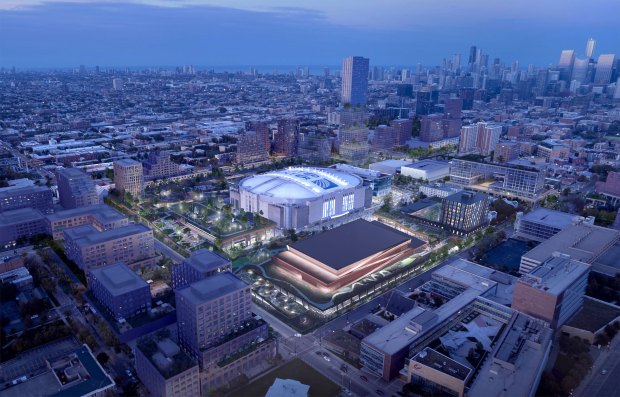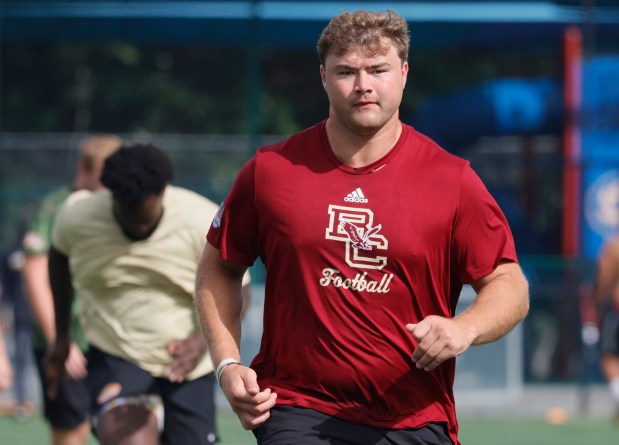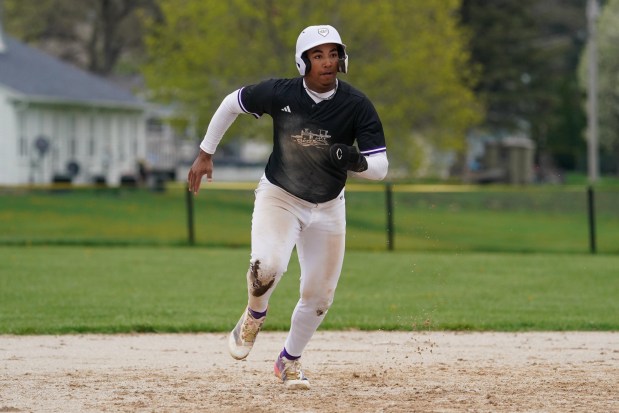The Chicago Plan Commission on Thursday endorsed the first phase of a plan by the Reinsdorf and Wirtz families to remake the Near West Side neighborhood around the United Center.
This initial step will include the privately financed construction of a 6,000-seat music hall, a boutique hotel and nearly 10 acres of green space, including play areas for all age groups. The initial phase also includes several parking garages topped by elevated parks open to the public, with retail spaces and cafes on the ground floors.
The first phase of development will be the centerpiece of a 15-year, $7 billion plan dubbed the 1901 Project that could eventually bring 9,463 new homes, with 20% reserved for affordable housing, to the United Center, which is now mostly surrounded by unsightly parking lots. The 1901 Project, named after the United Center’s address at 1901 W. Madison St., will also include 1,309 hotel rooms and open space totaling 25 acres. The Wirtz family has owned the Blackhawks since the 1950s, and Jerry Reinsdorf bought the Bulls in 1985.
United Center CEO Terry Savarise told commission members the new community would not be walled off or reserved for patrons of the 30-year-old United Center, home to the Chicago Bulls and the Chicago Blackhawks.
“This project is not just an entertainment district,” he said. “It doesn’t come with gates. We see the 1901 Project as a neighborhood.”
Savarise said it will offer amenities and recreational space to the entire Near West Side, spark further investor interest in the neighborhood, provide affordable housing for an area that sorely needs new development and boost efforts to add more public transportation, including a potential new CTA Pink Line stop.
“We think this neighborhood could be Chicago’s next great transit hub,” he said.
Commission members praised the United Center’s vision, which still needs City Council approval, especially the group’s willingness to create a walkable community with protected bike lanes and landscaped paths, and expand the total number of units from the roughly 5,000 initially proposed last summer.
“This feels like a project from people who have been listening to the conversations we’ve been having in this room for the past two years, and I really appreciate that,” said Ald. Daniel La Spata, 1st.
The park space will include lush greenery, outdoor dining and a plaza with year-round activities just south of the United Center, while the music hall will blend in with the surrounding development, said Matt Grunbaum, a designer at Field Operations, the New York-based firm creating the park space.
“We want this building to feel like it’s nestled into the landscape,” he said.
Although pleased about the United Center’s plans to eventually create up to 32,000 construction jobs over the life of the project, several labor union members and representatives voiced some dissent. They wanted to hear more about how the six planned phases will proceed, and who will be hired to build the new neighborhood.
“It will put people to work and provide jobs for the community,” said Andrea Kluger, chief of staff for the Chicago Federation of Labor, but she wants the United Center to guarantee high-paying jobs. “We need to ensure these jobs are union, a commitment we don’t have today.”
Kimmie Jordan, a member of UNITE HERE Local 1 who lives near 89th Street on the South Side, said she’d love the opportunity to get an affordable apartment near the United Center, a much shorter commute to her job at Bally’s Casino Chicago on the North Side. But she questioned why the music hall venue was slated for construction before the housing.
“When I look at the 1901 Project, I see a missed opportunity,” she said. “It seems to me the housing is an afterthought.”
Richard Peterson, senior project director with design firm RIOS, the site’s master planner, said starting with the music hall and landscaped parks, set to open by 2028, makes the most financial sense. These features will form the United Center’s new inner ring and make it attractive to thousands of future residents. And the second and third phases, which need separate City Council approvals, will add more than 3,000 units by 2031.
Other speakers on Thursday applauded the United Center’s support for local institutions such as Malcolm X College and the James R. Jordan Boys & Girls Club and wanted to see new housing and investment on such a massive scale.
“The city needs money and affordable units,” said Chicago resident Butler Adams. “In 15 years, I’ll be 60, so let’s get it done.”
Ciere Boatright, commissioner of the Chicago Department of Planning and Development, said a fully built-out United Center could have a ripple effect on surrounding blocks, many still dotted with vacant lots.
“This is a catalytic project,” she said. “Seven billion is absolutely a game-changer.”





